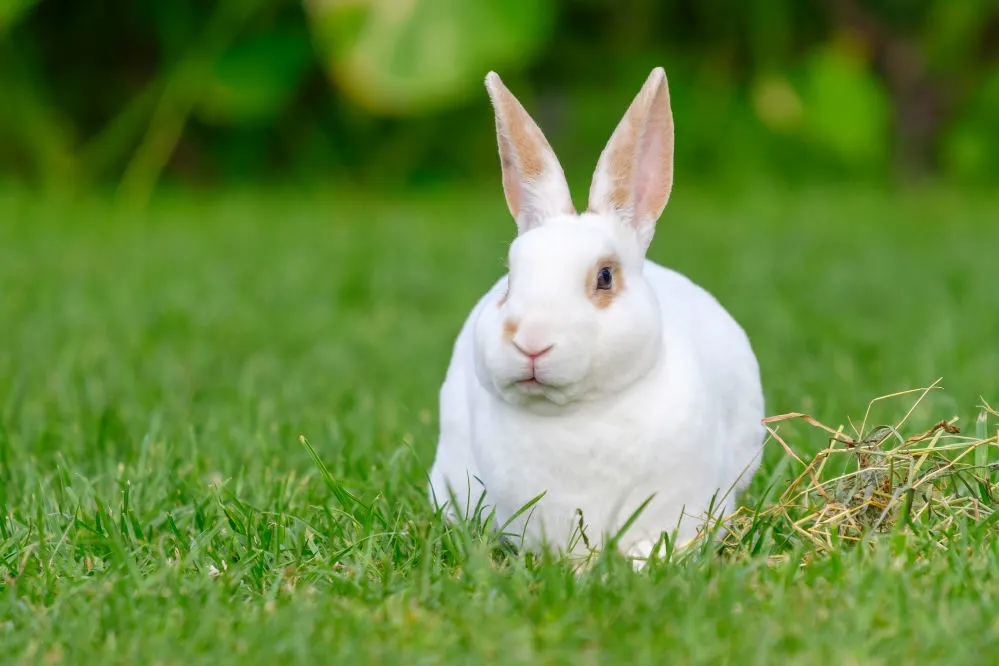On the hunt to adopt a new furry family member? You’ve come to the right place. This post covers the best breed of rabbit for first-time owners.
Whether you’re looking for long-haired buns, teeny-weeny dwarfs, or floppy-eared hoppers, you will find one just right for your home. These breeds are compatible with humans and other pets, making them excellent outdoor or indoor bunnies.
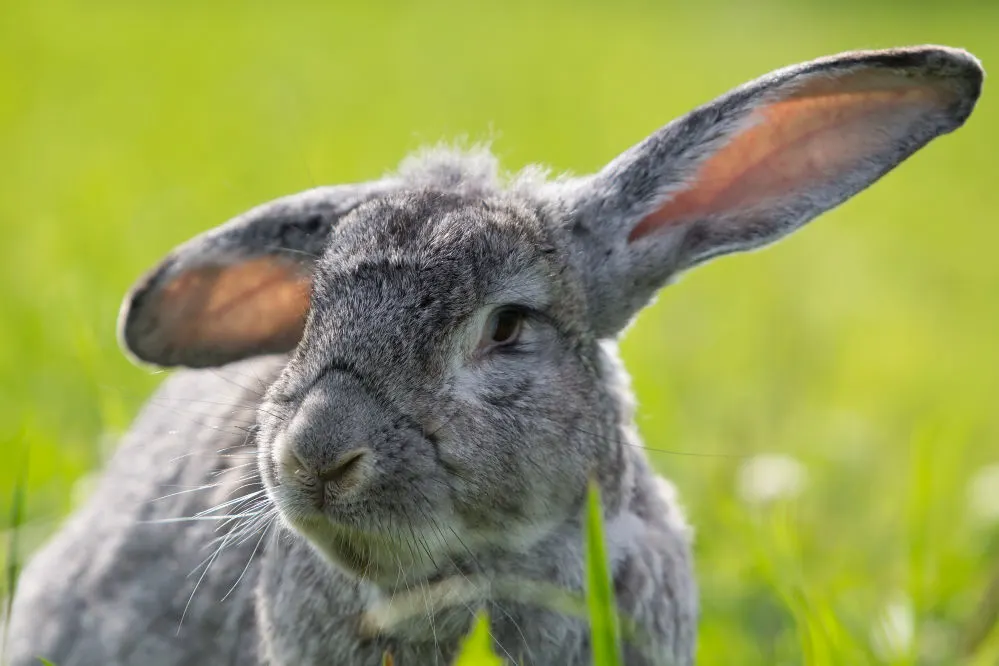
Not only will this guide present you with the most popular rabbit breeds for new owners, but also tips on how to look after them.
Get ready for an adorable new bunny to hop into your life — and heart.
Best breeds of rabbits for first-time owners
Like dogs and cats, there’s a breed for everyone. The American Rabbit Breeders Association (ARBA) officially recognized 50 different breeds. You may have a lot to choose from, but not all breeds are suitable for new rabbit owners.
Some would prefer calm bunnies, cuddle buddies, or those energetic balls that zoom through the air. Whatever your preference, you will find your soul pet in the list below.
1. Mini Lop rabbits
Mini lops are the friendliest breeds of rabbits who are affectionate and love cuddles. These tiny, adorable bun-buns do not grow more than 4.5 to 6.5 pounds (2-2.9 kg). They have stocky, short bodies with wide hinds and dense coats in different colors.
You’ll notice them by their cute button noses, big round eyes, and floppy ears — much like a stuffed toy. Their gorgeous, shiny coats and droopy ears only need grooming every few weeks to keep them clean.
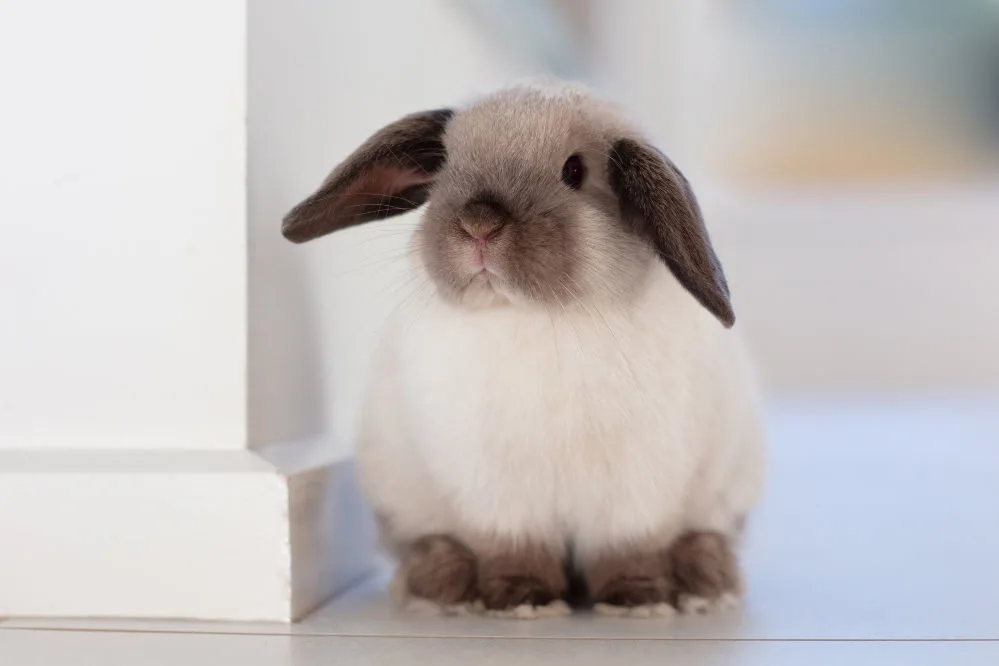
Mini lops are intelligent, easygoing, cheerful, and enjoy human company. They’ll also get along with kids and other pets and are trainable. Their smaller size makes them a good option for compact homes, and they can live up to 12 years on a proper diet.
2. Holland Lop rabbits
The Holland or Dutch lop is another pocket-size breed with droopy ears that’ll steal your heart. Weighing only two – four pounds (0.9 – 1.8 kg), these social animals are ideal house rabbits and a popular choice for new owners. Since Holland lops are lively, active, and playful, they’ll be suitable for small children. (Maybe just put families here or a note that children should be supervised.)
Keep in mind that these little fuzz balls thrive on attention, so you have to be entirely hands-on. Not only that, but they sadly at risk for dental and ear disease due to their conformation.This means the vet bills might pile up.
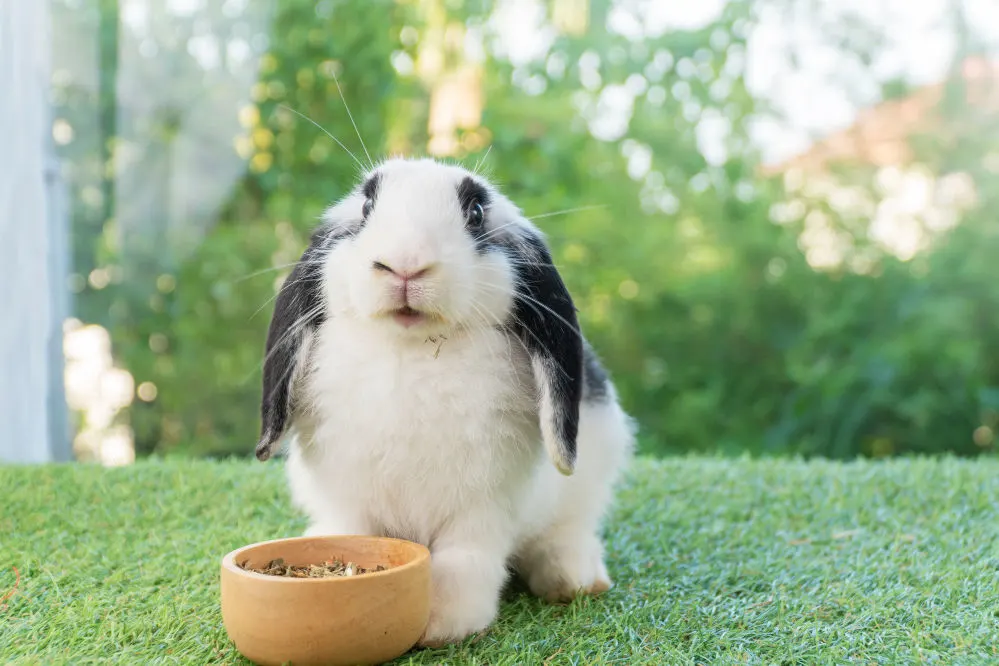
However, their playful, affectionate nature will make up for it. Make sure you groom their fur weekly. Aside from that, they should be easy to care for.
3. Dutch rabbits
The Dutch rabbits, also known as a Hollander or Brabander, are wonderful pets thanks to their friendly nature. If handled and socialized correctly, these can be great pets. Hollanders are easily identifiable due to their characteristic color pattern, large erect ears, and long, strong hind legs.
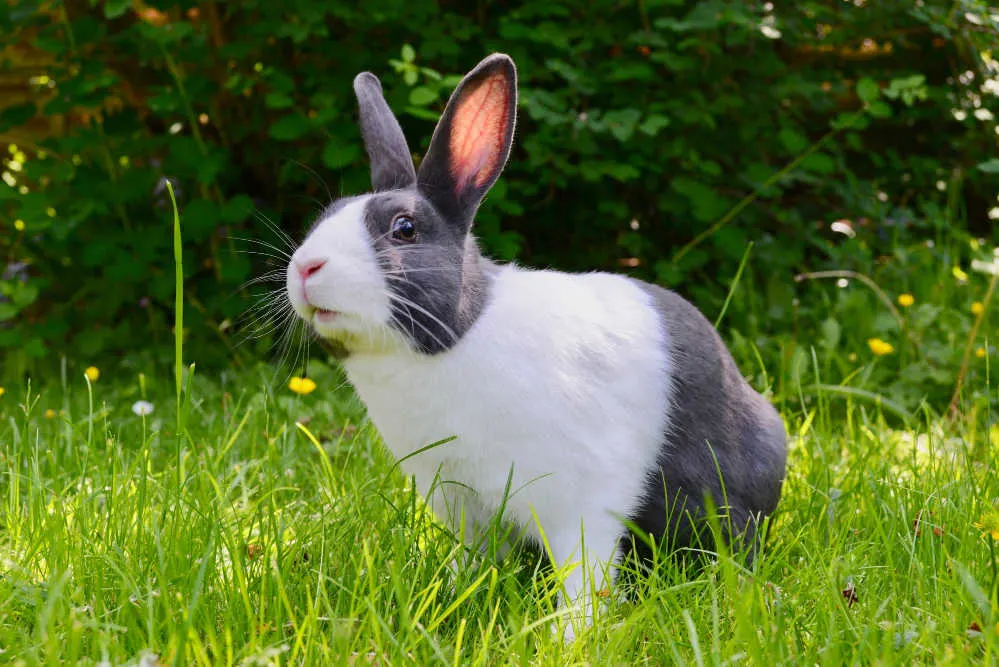
The Dutch bunny is mainly black and is among the smaller rabbits weighing between 3.5 to 5.5 pounds (1.6 – 2.5 kg). These bun-buns are sporty and active and will enjoy cuddling up to you. They can live between five – eight years and may suffer from health problems common in rabbits, such as uterine cancer, parasites, and digestive and respiratory issues.
4. Lionhead rabbits
You’ve guessed it. This furry creature resembles a lion thanks to its magnificent wool mane encircling its head. These majestic-looking buns require daily human interaction, a healthy diet, and much space to exercise and play.
Prepare for lots of grooming (and shedding). You’ll have to pamper your hairy bun about once every two days. Otherwise, their mane will get matted. They typically weigh less than four pounds (1.8 kg). While the mini-lion appearance might fool you into thinking they are aggressive, most are playful and kind.
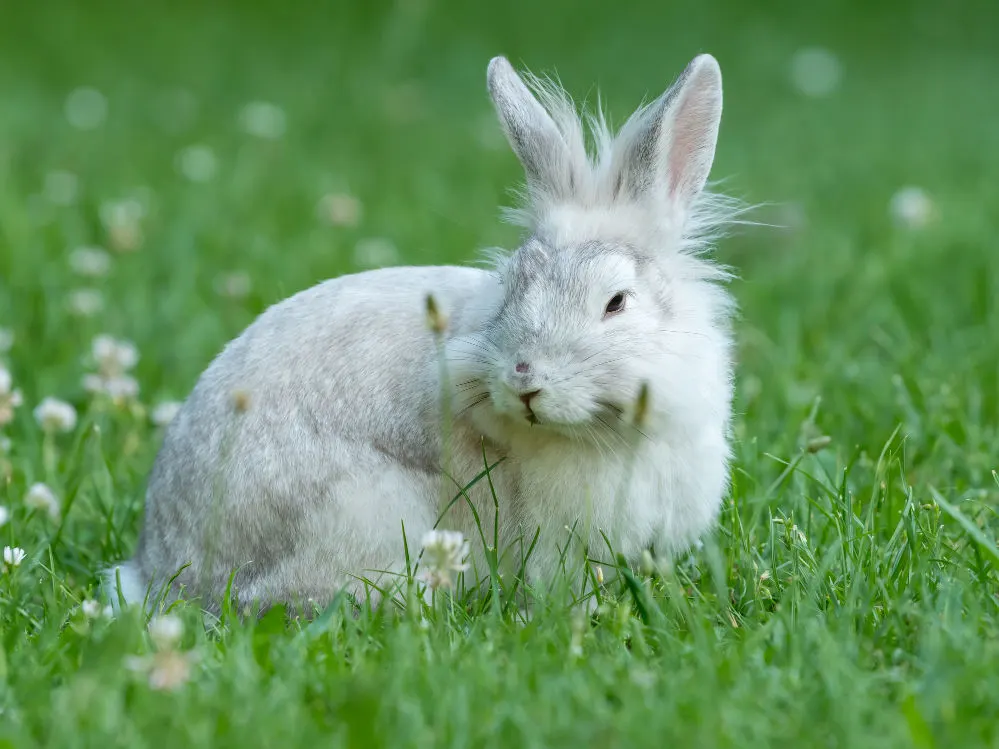
They are excellent family pets but also delicate, so do not leave them unattended with small children.
5. English Lops
The English lop probably has the longest, droopiest ears of all bunnies. This is one of the first rabbits bred by humans as a lop breed in the early 1900s. Sporting massive, floppy ears, this fancy breed is one of the oldest house pets with a docile nature and incredibly soft fur.
These fluffy hoppers are generally calm, quiet, and gentle, befitting the Victorian era in which they were bred. They’ll weigh about nine – 11 lbs (four – five kg) thanks to their ears, of course. English lops have short fur that must be brushed at least once weekly.
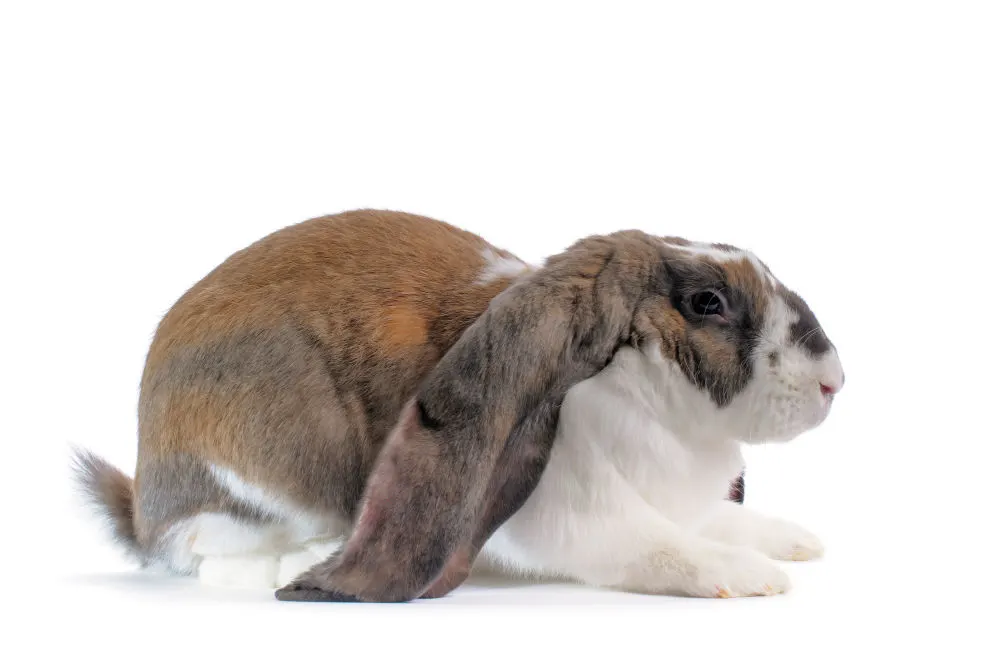
These bunnies have a lifespan of five – seven years and are generally healthy if fed right. Unsurprisingly, they are prone to ear infections (otitis) due to wax build-up.
6. Harlequin rabbits
The Harlequin rabbit is a colorful breed that originated in France. They stand out for their unique coloration and markings, resembling a clown. These quirky-looking buns are relatively rare but make wonderful family pets.
Harlequin rabbits are medium-sized and well-muscled with an ideal weight of about 6.5 to 9.5 lbs (two – three kg). These rabbits are not aggressive at all but rather fun, playful, calm, and clever.
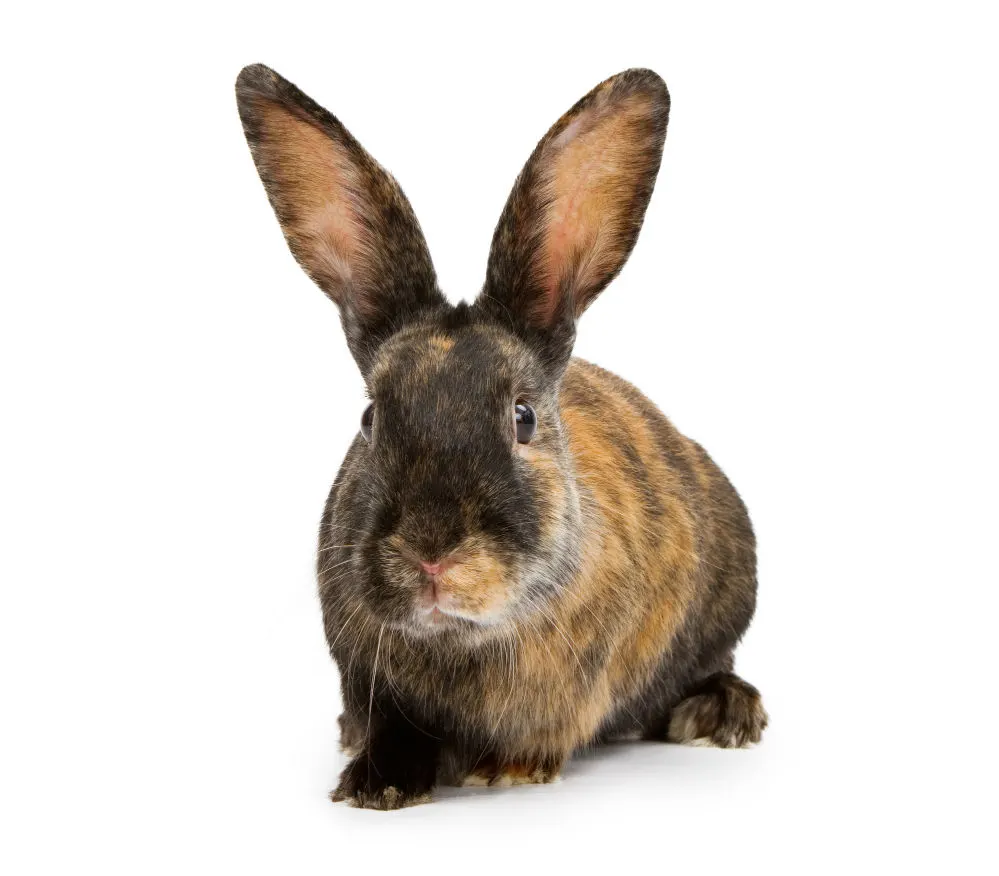
These bunnies should be easy to care for as long as you provide them with fresh foods daily and ample space for lots of playtime. Harlequin rabbits have short coats that benefit from grooming once a week or as needed. Their lifespan varies from five – 10 years, depending on their quality of life.
7. Himalayan rabbits
Himalayan rabbits are a medium-sized breed often mistaken for the Californian rabbit. These beautiful bunnies have white bodies with colored points, commonly chocolate, lilac, black or blue. With such a striking appearance and docile temperament, it’s no wonder so many people are drawn to them.
They are really good pets as they love to be handled, won’t bite or scratch, and have a calm nature. That said, Himalayan rabbits may be more suitable for older children as they’re less active. These rabbits can live a full, happy life of five – eight years with few health issues.
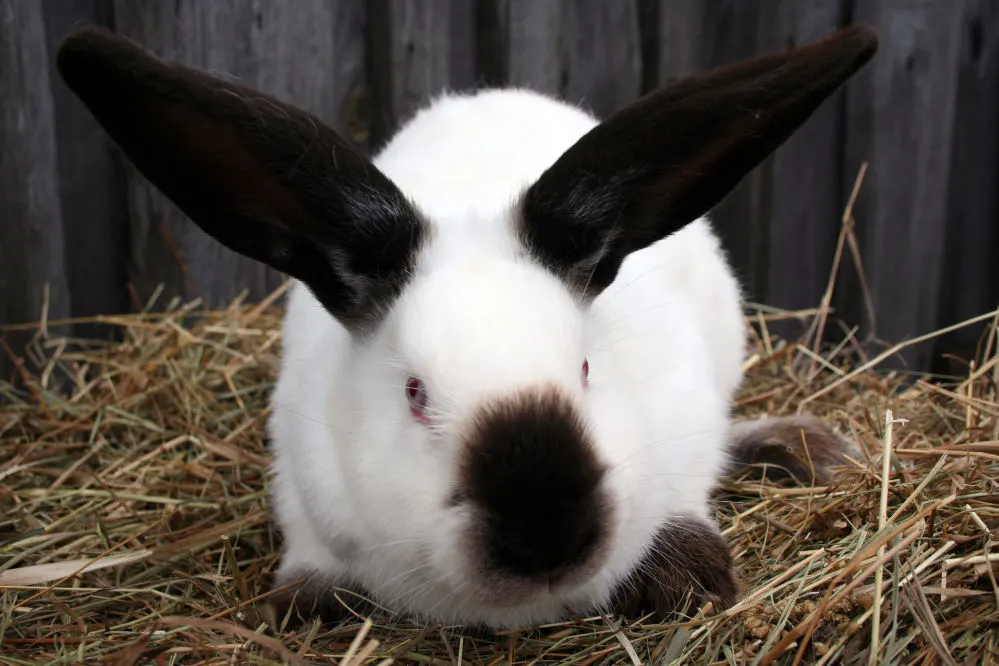
As for grooming this bunny, you’ll need to do this regularly (at least once per week) using a sturdy brush.
8. Netherland Dwarf rabbits
Netherland dwarfs are about the cutest rabbits you’ll ever come across. Known for their small size and neotenic appearance, they look like baby bunnies frozen in time. They have tiny ears, small button noses, round bug eyes, and flat faces that’ll melt your heart.
This is one of the best bunnies for first-time owners, as you won’t need a big hutch or plenty of space to set them up in your home. They are even small among dwarf breeds, weighing only around two and 2.5 pounds (0.9 – 1.13 kg). Don’t let their cuddly appearance fool you because they can be aggressive and dislike being picked up.
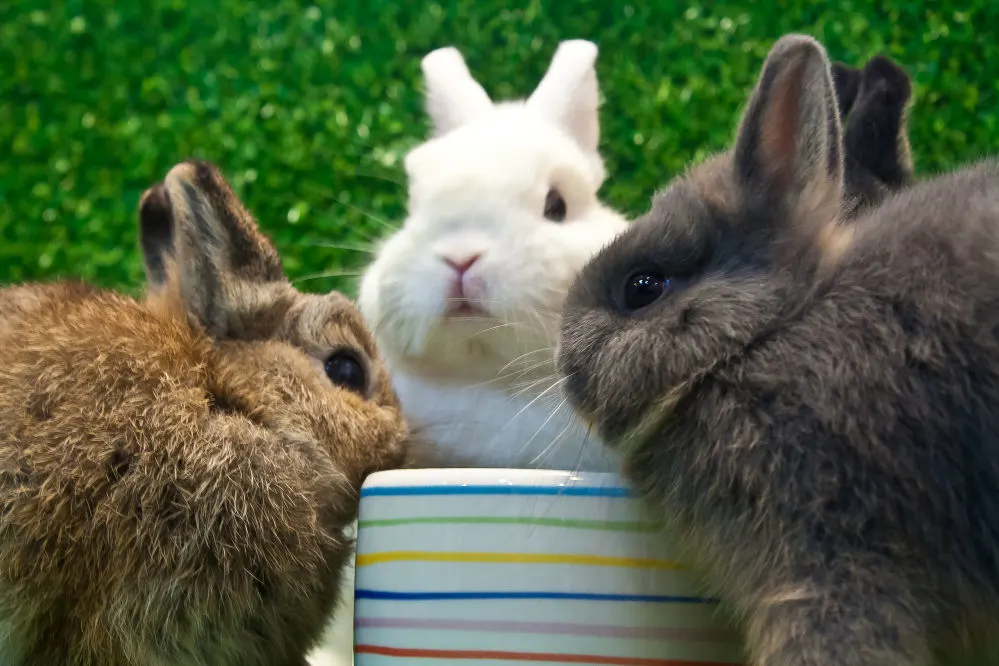
After some time, you’ll see their calmer, tamer side. Due to having smaller heads, these buns are prone to dental disorders, but they shouldn’t be too high maintenance. Their lifespan is between eight -15 years, and they’ll keep themselves clean.
9. Mini Rex rabbits
Mini rexes are a type of dwarf rabbit first bred in 1984 in Florida. This breed is known for having boisterous and playful personalities. They are lively, good-natured, intelligent, affectionate, and nurturing — often caring for other rabbits.
As with most rabbits, Mini rexes don’t like being held, but you can play with them on the floor, and they’ll often hop on your lap. These small rabbits weigh about 3.5 – 4.5 lbs (1.6 – two kg). They can live between eight -12 years with the usual rabbit health concerns being possible such as GI stasis and respiratory disease.
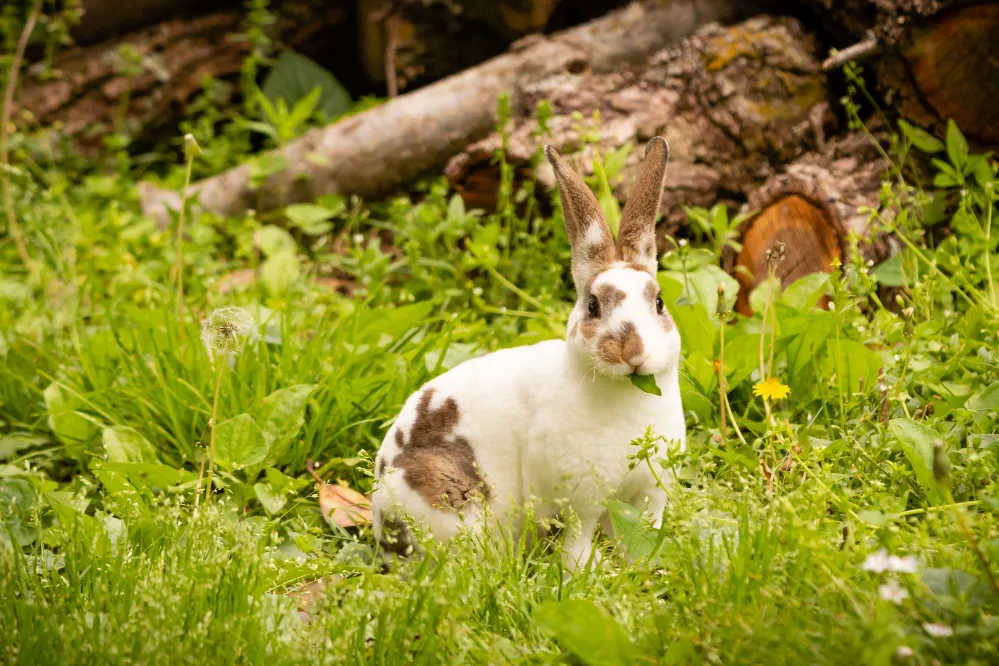
Ensure you provide them with enough fresh, loose grass hay, and they don’t require much grooming.
10. Chinchilla rabbits
Chinchilla rabbits consist of four types: Standard, American, Gigantas, and Giant Chinchillas. Despite its name, they are not related to chinchillas. Instead, its coat resembles that of a chinchilla.
This breed is not aggressive and is suitable for all types of people, young children, first-time owners, and elders. They are gentle, sweet-natured, and ideal indoor pets with few health problems. Chinchilla rabbits have a lifespan of five – eight years and require no traditional grooming.
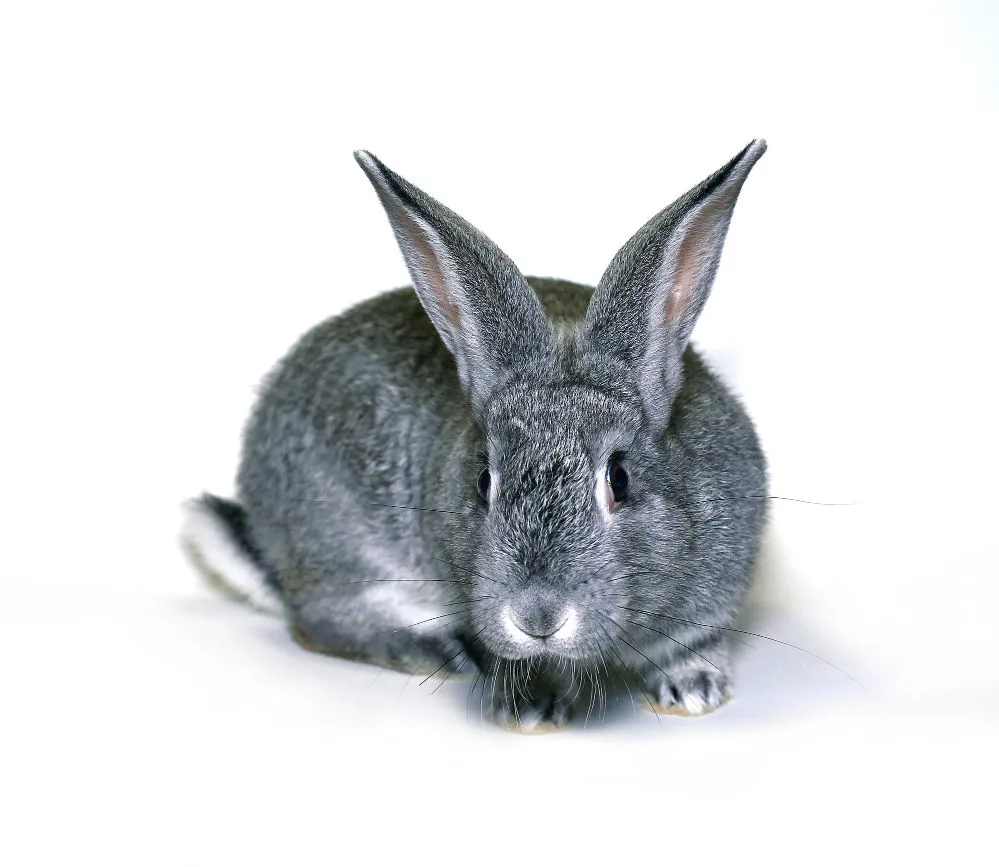
It’s quite a large rabbit weighing anywhere between nine to 12 pounds (four – 5.5 kg).
Tip: You can wipe their coat with a damp cloth to keep it in tip-top condition.
11. Californian rabbits
Here is a breed of playful rabbits who enjoy digging, chewing, and hopping. The Californian rabbit will be a good choice for families with small children as they are active and social. They also don’t mind being picked up and have a calm and gentle side.
Often bred as show bunnies, these timid pets are heavy, weighing around 7.7 – 10.6 lbs (3.5 – 4.8 kg). Californian rabbits do not have any breed-specific illnesses but require a healthy diet rich in vitamins A, D, and E and fiber. These furry pals can live between five – 10 years.
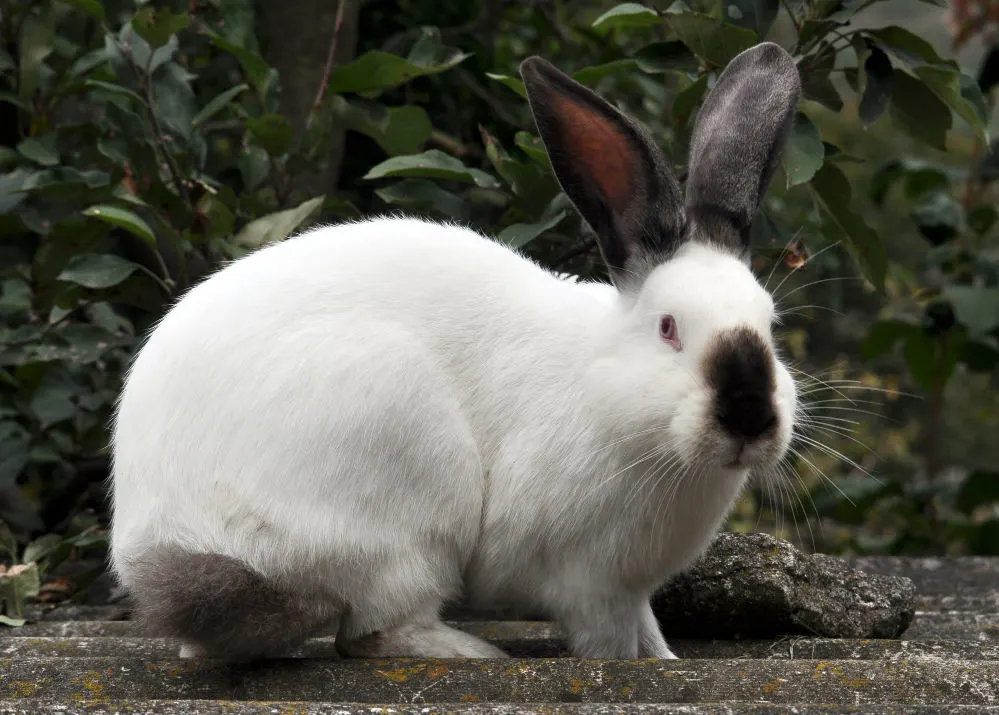
They don’t require much grooming. Brushing their fur once every week or two weeks with a slicker brush should be enough.
12. Angora rabbit
Angora rabbits (or English Angora rabbits) are one of the fluffiest animals with dreamy long fur known as Angora wool. While these rabbits were likely bred for their soft wool, they’re also one of the oldest domesticated breeds. They are docile and social, making them great pets for anyone willing to groom them two – three times per week.
Their charming looks and wonderful temperaments make them quite popular and, as a result, a bit more expensive than most rabbits. If you purchase them from a reputable breeder, they can cost anywhere from $50 to $250. They can be kept indoors and outside and live between five – eight years.
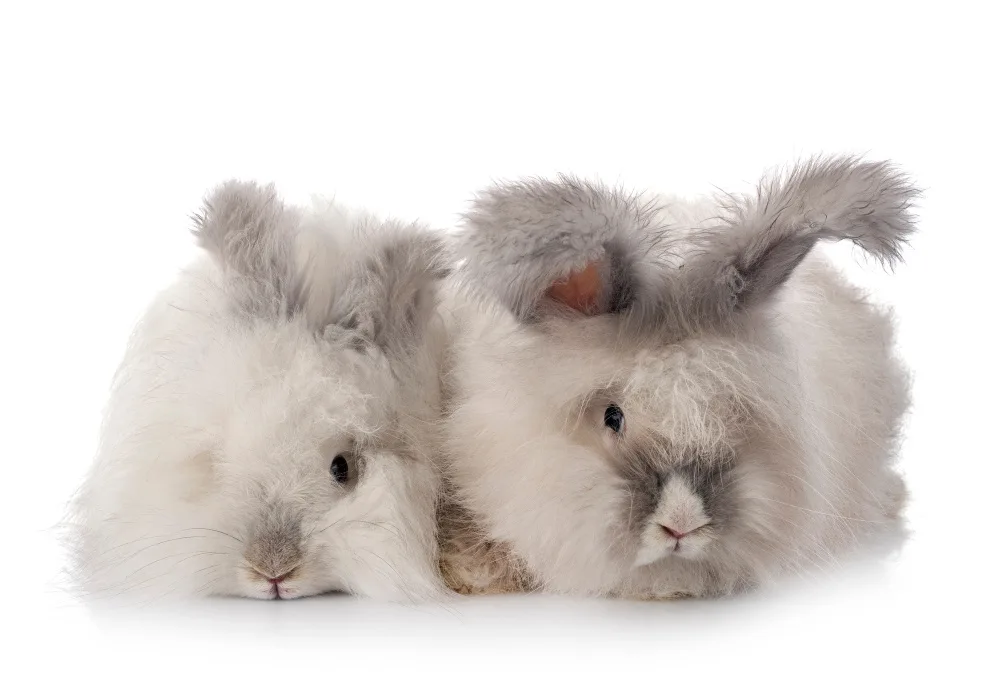
Angora rabbits need more protein than most rabbits to support constant wool production.
13. American Fuzzy Lop
The American fuzzy lop will make you go, awww! These sweet, loveable furry small rabbits were first bred on the East Coast of the United States. They look similar to the Holland lop with Angora-type wool, so consistent grooming is a must.
These adorable fluff balls are sweet-tempered, playful, active, and social, with a fun personality. They enjoy playing with their owners, so you’d want to provide them with plenty of chew toys. Ideal for children, too, the American fuzzy lop has a lifespan of five to eight years, weighing no more than three – four lbs (1.3 – 1.8 kg).
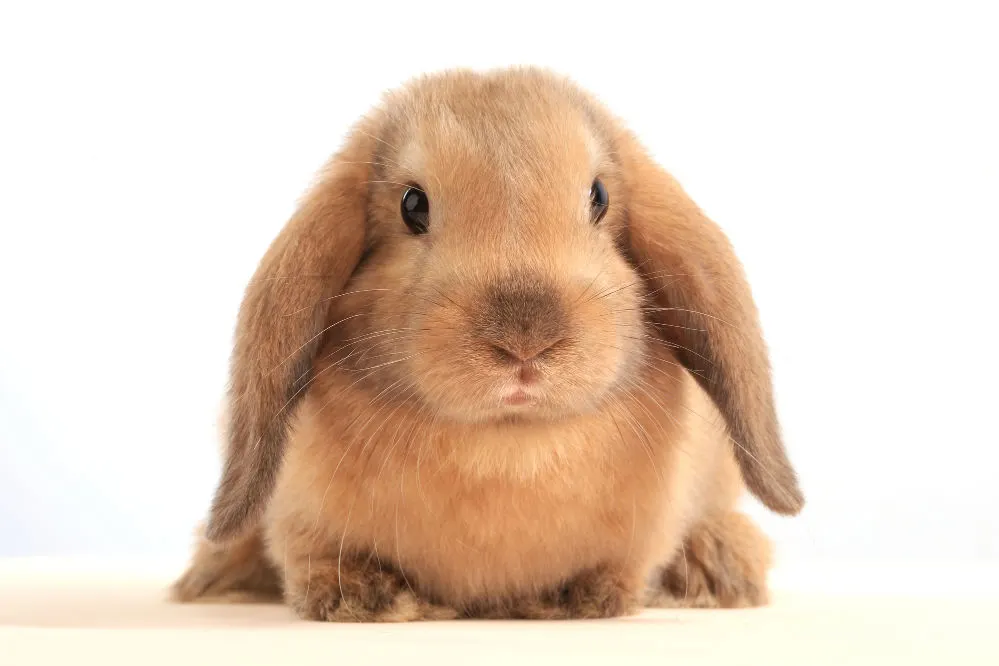
This breed is not at risk of any specific disease, but watch out for wool blocks (or hairballs).
14. Flemish Giant rabbits
There are only a few giant breeds on this list, and this one happens to be the largest breed of domestic rabbit. The Flemish giant rabbit can weigh 15 pounds (6.8 kg) on average and reaches 2.5 (0.76 meters) feet in length. Now that’s a huge rabbit.
Surprisingly these mega hoppers are very docile and require almost no grooming, making them one of the best pets to consider. For these reasons, they are known as the gentle giants in the rabbit kingdom. A Flemish giants lifespan is between eight – 10 years, and they may develop common rabbit health concerns.
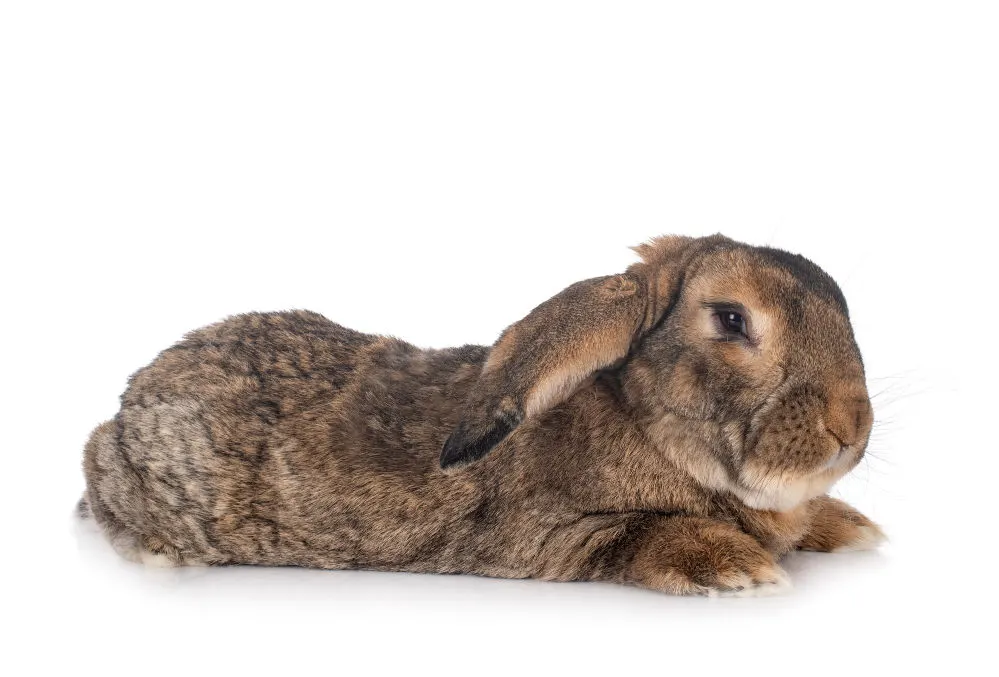
These large-sized rabbits might be better for older kids as they thrash their feet and may bite if handled inappropriately.
15. French Lop
Bred in France in the 19th century, the French lop is a calm and gentle breed that loves attention. No, seriously, they can bond very quickly with new owners. They look similar to the English lop but have shorter ears and are heavier in stature.
The average lifespan of this bunny is between six – eight years, and they are unfortunately more prone to certain medical conditions, like dental disease, compared to other breeds. French lops have low-maintenance coats that require only once-a-week grooming for most of the year.
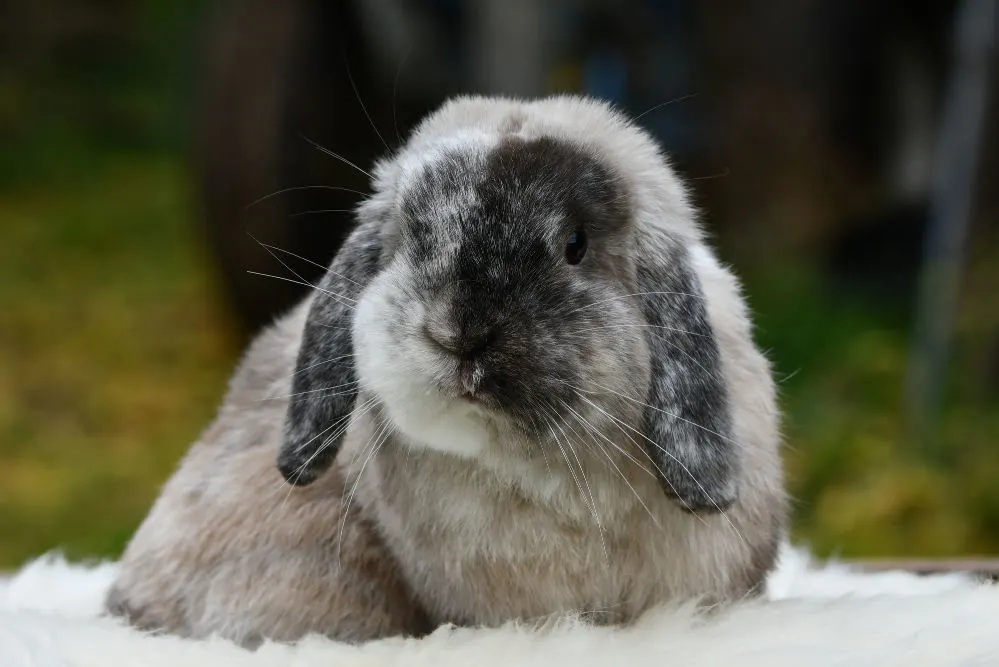
The average weight of these rabbits is between 11 – 13 lbs (five – six kg). They get their ears from the English lop and their size from the Flemish Giant stock.
16. Polish rabbit
The Polish rabbit is the most polished bunny ever (no, literally). Their coats are so smooth, shiny, and perfect that they’re bred explicitly for rabbit shows. They’re not just pretty; if handled correctly, they can be friendly, gentle, and social.
These curious little furry pets love attention and will enjoy getting groomed weekly or biweekly. They’re calmer than most dwarf breeds, with a lifespan of five – eight years. As for health, they don’t need special care as they’ll likely only suffer from common rabbit illnesses.
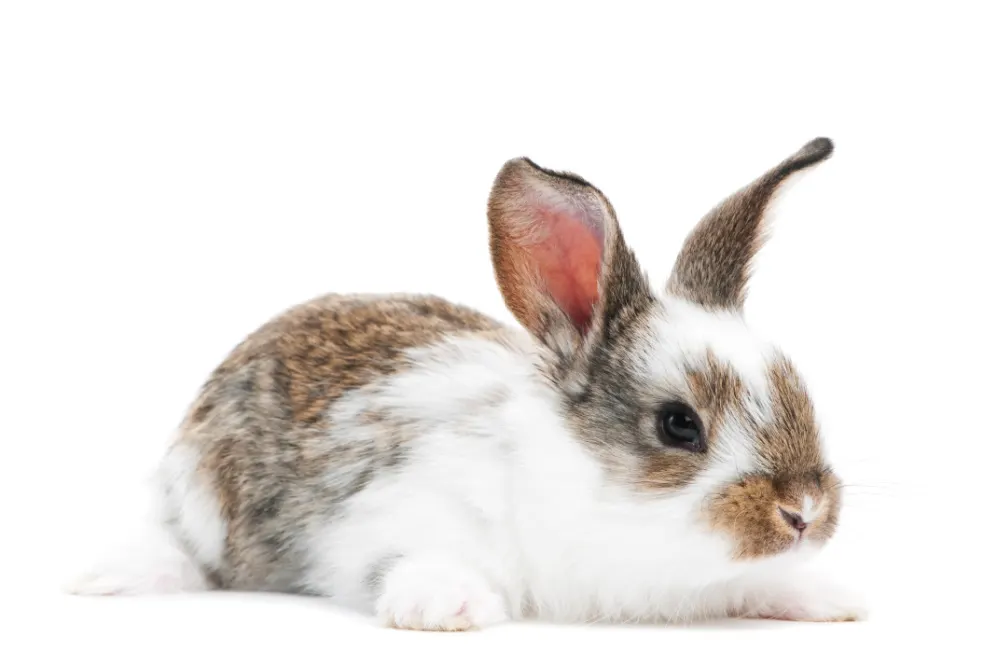
The ideal weight for this bunny is about 2.5 lbs (1.1 kg), requiring a well-balanced diet of primarily fresh hay.
17. Florida White rabbits
The Florida White rabbit is a small breed that is fully white with no markings and red eyes. Sadly these cute fur babies were initially bred for laboratory use, but fortunately, now they make excellent home pets. They are relaxed, good-natured, and gentle, making them suitable for families with children.
Florida White rabbits are not the easiest to socialize and must spend much time with their owners. In that sense, it would be better to adopt this bunny if you’re not constantly on the go. These rabbits weigh around four – six lbs (1.8 – 2.7 kg) and require grooming once weekly (this can increase to twice weekly during shedding).
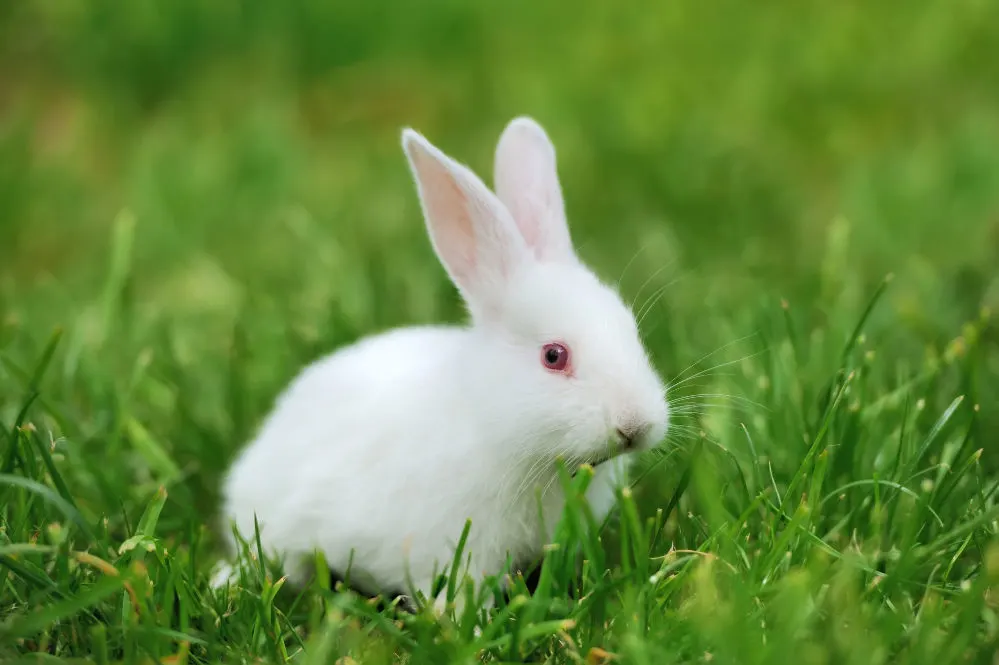
Their average lifespan is five – eight years, and they are generally hardy and healthy.
18. English Spot rabbit
The English spot rabbit is like the Dalmatian of bunnies sporting a shiny white coat dotted with black marks. They are so precious and have lovely personalities for anyone looking to adopt a bunny for the first time. These rabbits have mild, even temperaments and are pretty inquisitive and friendly.
They don’t enjoy being handled, so you may not have your next cuddle buddy. However, they are playful, energetic, and regularly burst into entertaining acrobatics. So you do need a lot of space for them to hop around.
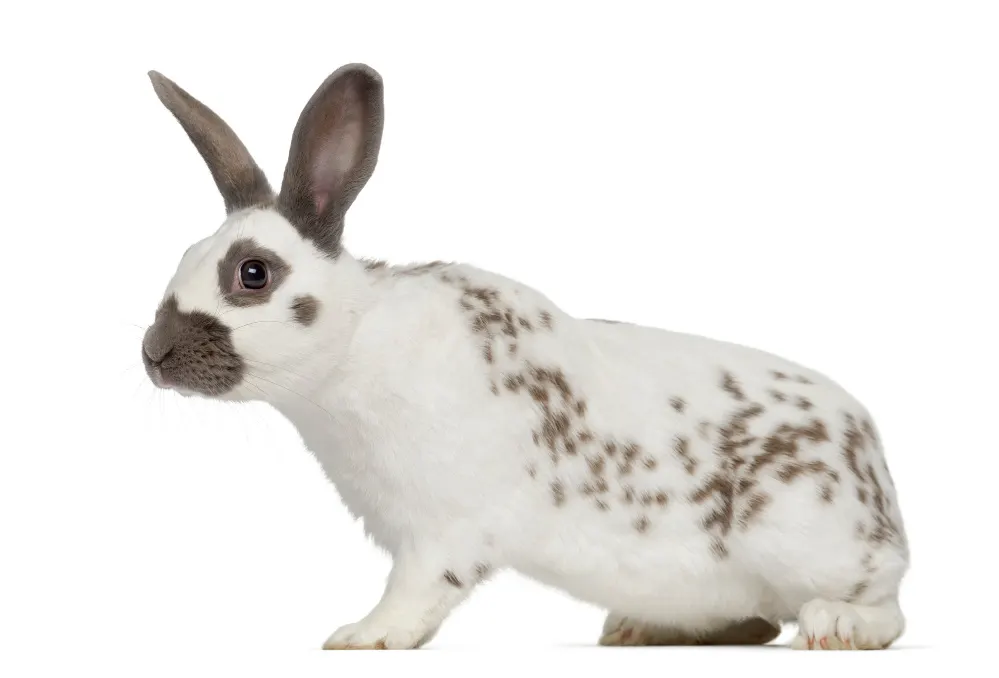
The English Spot rabbit has a life expectancy of five – nine years and is generally healthy. They weigh around 6.6 lbs (three kg) as adult rabbits and require regular grooming.
Beginner-friendly tips for first-time rabbit owners
Being well-prepared for your new bunny will be the key to the happiness of both furry and non-furry parties. Here are some helpful tips:
Choosing the right hutch
A good rule of thumb is to ensure that the hutch is at least four times bigger than the size of your rabbit. To be more technical, you’d want to aim for one square foot for every pound of an adult rabbit’s weight. A hutch should be at least 20 inches (50.1 cm) high and even higher for larger breeds.
Read Next: These adorable rabbit house ideas will give you more insight on which hutch to choose.
What to feed your rabbit?
A balanced rabbit diet consists of 70% – 80% fresh grass and hay. Fresh vegetables like bok choy, carrot tops, watercress, basil, romaine lettuce, etc., should make up the rest. You can also include pellets and an occasional fruity treat two – three days per week.
Read Next: Can rabbits have squash?
When should you spay/neuter your rabbit?
Most rabbits will be ready for spaying or neutering between four – six months old when they’ve reached sexual maturity.
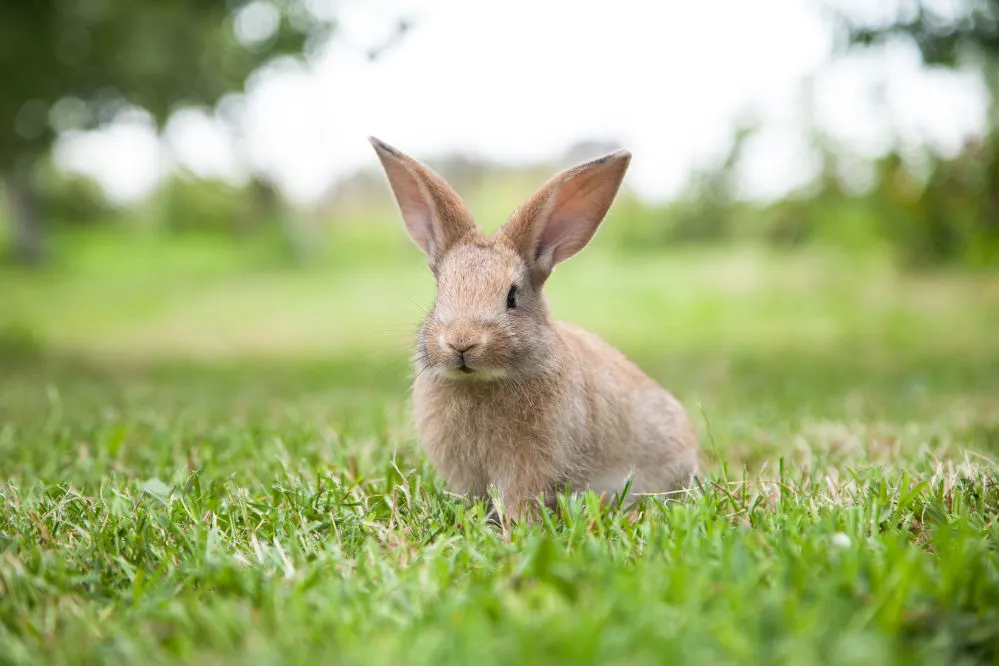
Read Next: Find out how much it costs to neuter a rabbit.
Best rabbit breeds for a first-time owner: Wrapped up
Now that you know all the best rabbits for first-time owners, which one will you choose? While this decision may seem impossible because they’re all so darn cute and gentle, the best thing is also to consider if any of the above rabbits would choose you too. Maybe you’re noisy and busy; perhaps you’re chilled and inactive?
Regardless, any of these bun-buns would be an excellent choice and a loving addition to your family.
Steph Dyson is a travel journalist by trade but a lover of all small pets. She’s been a pet mum to everything from gerbils to guinea pigs, rabbits to hamsters, and fish to dogs of all shapes and sizes. She wants to share her years of experience with small pets and make Small Pet Guides the go-to website for pet owners seeking information and care advice.

